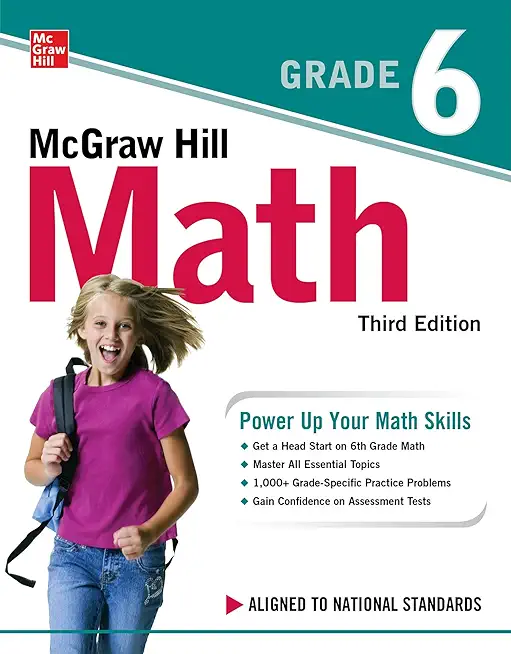
An engaging math workbook to help your 6th grade student master the skills necessary to perform better in class and on standardized tests
Colorful, dynamic, and filled with engaging activities, McGraw Hill Math Grade 6, Third Edition provides maximum educational value, giving your sixth grader a student-friendly learning experience to learn and practice the skills they need to do well in school and on standardized tests.
Based on the curriculum standards followed by states across the U.S., McGraw Hill Math Grade 6 covers key topics with easy-to-follow instructions, helpful examples, and more than 1,000 practice problems with answers. End-of-chapter tests allow your child to see where mastery has been gained and what they need to focus on. As they master each concept, your child will sharpen their problem-solving skills and build the confidence they need to succeed in sixth grade math.
Features include:
- New: Multi-step problems and word problems.
- A state-by-state guide shows you how to focus your child's lessons
- The guide shows which states have adopted Common Core State Standards, how each state has implemented the standards for math, and outlines the standards for non-Common Core states
- 1,000+ math problems with explanations for answers
- A 10-Week Summer Study Plan shows you how to create the best study schedule for your child
- A pretest helps your child determine which skills require more attention
- End-of-chapter tests helps your child assess if they've mastered the chapter's concepts
- Posttest at the end of the book shows your child how well they understand key concepts
- A glossary explains key terms that students will encounter in the book
- Place values and estimating
- Number properties and order of operations
- Negative numbers and absolute value
- Factors and multiples
- Solving problems with rational numbers
- Ratios and proportions
- Percent
- Exponents and scientific notation
- Solving equations and inequalities
- Customary and metric units of measure, including conversions
- Solving problems by graphing points on the coordinate plane
- Classifying polygons based on their properties
- Calculating perimeter, area, surface area, and volume
- Data presentation
- Statistical variability, including probability







